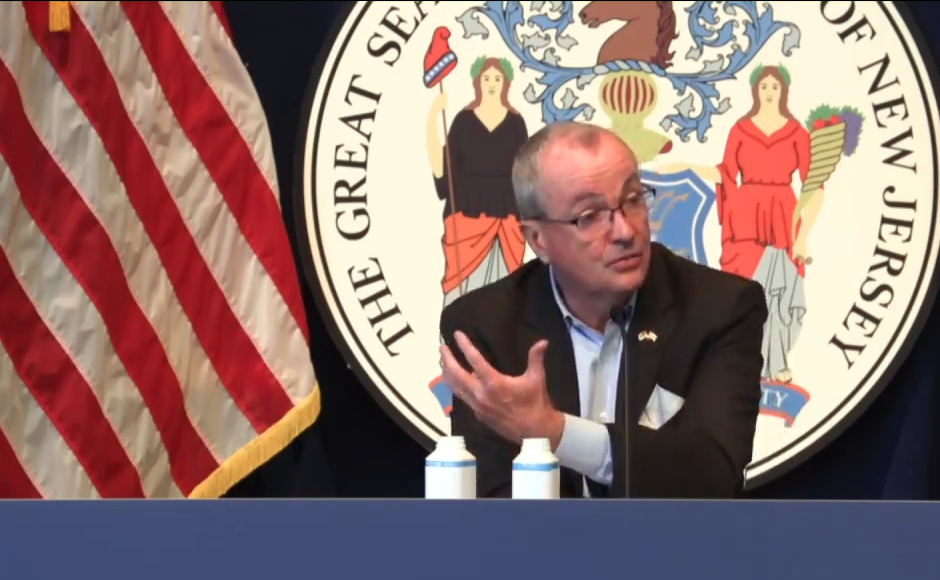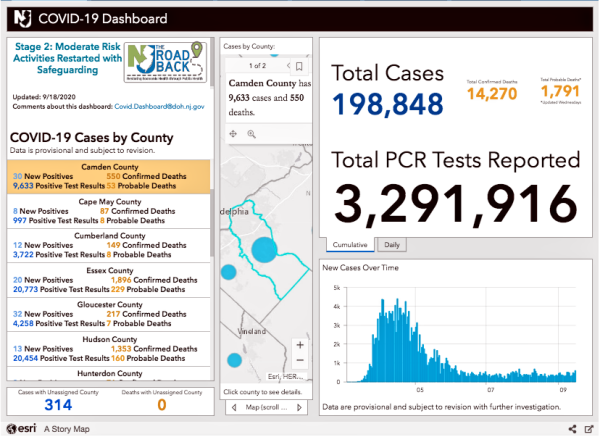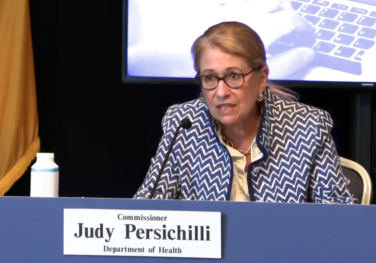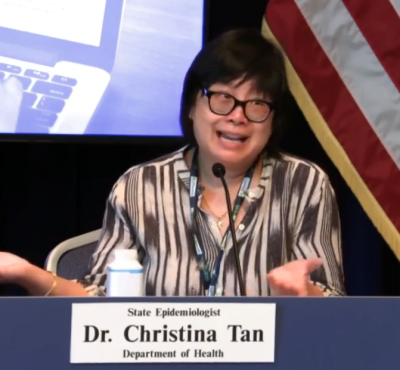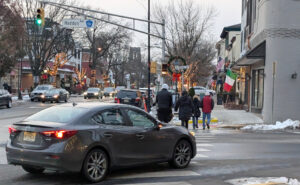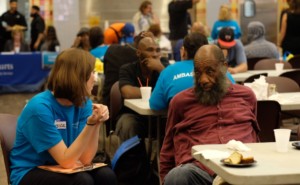‘We are fighting an invisible enemy, and we must continue to be vigilant to protect ourselves and our loved ones,” NJ Health Commissioner Judy Persichilli says.
By Matt Skoufalos | September 18, 2020
Another 519 New Jersey residents have tested positive for novel coronavirus (COVID-19), bringing the statewide total to 198,848 cases, Governor Phil Murphy reported Friday.
Sadly, five more residents have perished from complications related to the virus, bringing the statewide death toll to 14,270 lives lost during the pandemic.
All five deaths happened within the past five days, Murphy said.
In addition to those lab-confirmed fatalities, the state has acknowledged another 1,791 probable COVID-19-related deaths, two more since last week.
In the past six months, 262 of every 100,000 New Jersey residents have been hospitalized with COVID-19, and 162 of every 100,000 have died from COVID-19-related complications.
More than 3 million people have been tested for the virus statewide, with a 2.23-percent positivity rate per 100,000 residents.
Rate of transmission (Rt) at 1.08, spot positivity highest in South Jersey
The statewide average of COVID-19 spot positivity testing stood at 2.19 percent September 14; in South Jersey, it was higher, at 2.65 percent.
Rt, the variable that describes the seven-day, rolling-average rate of transmission of new COVID-19 cases, hit 1.08 from samples taken September 16.
An Rt figure greater than 1.0 means that each new COVID-19 patient is infecting more than one other person, on average, and the spread of the virus is increasing.
Since its mid-April COVID-19 spike, the highest reported RT in New Jersey was 1.48, recorded August 1. The lowest was 0.62, recorded June 9.
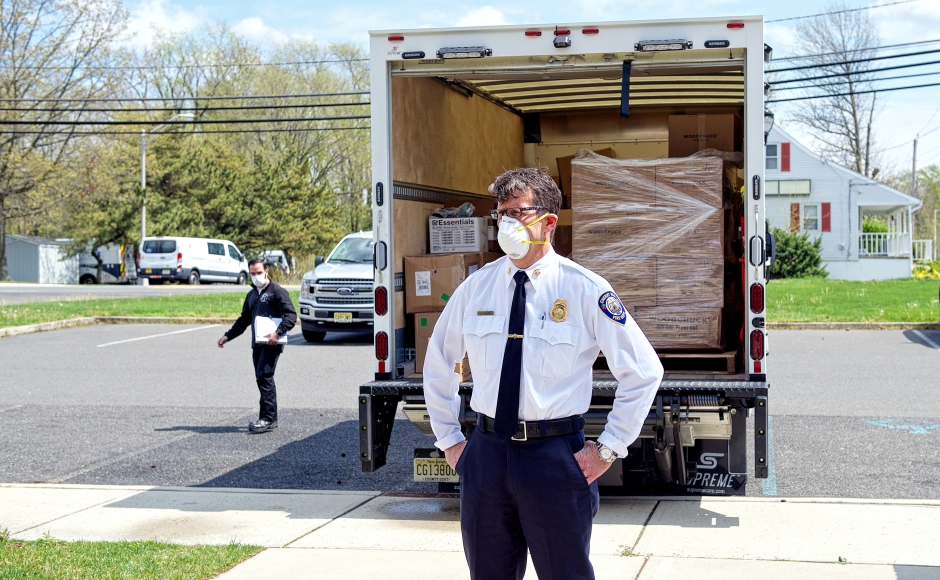
At the Camden County Office of Emergency Management, Cherry Hill Fire Chief Chris Callan oversees a delivery of personal protective gear for long-term care sites. Credit: Rich Ratner.
Long-term care accounts for half of all deaths, a fifth of those infected
Throughout New Jersey, 413 people currently are hospitalized with a case of COVID-19: 221 have tested positive for COVID-19, and 192 are awaiting confirmation of their symptoms.
Among those hospitalized patients, 73 are in intensive or critical care, and 36 of the ICU and critical-care patients (50 percent) are on ventilators.
Across the state, 697 long-term care (LTC) centers have reported at least one case of COVID-19, and 152 are dealing with an active outbreak. LTCs account for 38,500 infected patients and staff in New Jersey, or 20 percent of total cases.
That includes 25,001 residents and 13,499 staffers sickened by the virus, as well as 7,141 lab-confirmed resident and staff deaths (50 percent of the statewide total), with facilities self-reporting 121 staff deaths.
Of 656 veterans residing in a state-run home, 389 residents have tested positive for COVID-19, and 146 have died from complications related to the virus. Five veterans presently are hospitalized with COVID-19, and 243 have recovered from the virus.
At state-run psychiatric facilities, 214 of 1,196 patients and 519 staff members have tested positive for COVID-19. Thirteen patients and seven staffers have died from complications related to the virus.
To date, 57 New Jersey children aged 1 to 18 have been diagnosed with pediatric multisystem inflammatory syndrome, New Jersey Health Commissioner Judy Persichilli said.
All those pediatric patients have tested positive for an active COVID-19 infection or the presence of COVID-19 antibodies, indicating exposure to the virus. No deaths have been associated with this syndrome in New Jersey, although several children have been hospitalized during their treatment.
As positivity climbs, officials turn focus to community spread among young people
Health officials continued to emphasize the importance of controlling the spread of the pandemic among younger New Jerseyans, who are disproportionately represented among the newest positive cases logged in the state.
Amid a week of “very large increases in Monmouth and Ocean Counties,” Persichilli said Thursday’s reports showed those aged 20 to 29 accounted for about 27 percent of all new cases statewide; those aged 10 to 19 made up another 17 percent.
Friday’s data followed similar trends, with those aged 18 to 29 accounting for 33 percent of all new cases, she said.
“Some [cases are] linked to celebratory gatherings, like parties, and some [are] linked to solemn gatherings, as in funerals,” Persichilli said. “This increase in cases reminds us that this virus is unrelenting.
“We are fighting an invisible enemy, and we must continue to be vigilant to protect ourselves and our loved ones,” she said.
New Jersey State Epidemiologist Dr. Christina Tan said the latest data represent “the change in epidemiology” in the state.
“While it’s true that younger individuals are less likely to develop complications and more severe illness associated with COVID 19, they pose a risk to other individuals who might have underlying medical conditions; older individuals,” Tan said.
“The fact that we’re still seeing deaths and still seeing hospitalizations is a cause for concern, even if they’re lower in number,” she said.
“Don’t let your guard down,” Murphy pleaded with residents.
“We’ve come an enormous distance in the six months that we’ve been at this,” he said. “Let’s keep up the diligence. Let’s keep up the compliance.”
Without a vaccine or antiviral therapeutics, the best defenses against the pandemic are individual responsibility: face coverings, social distancing, and hand-washing, Murphy said.
“It’s simple, basic stuff,” the governor said. “The complicated part is the human-nature element of it. Can we stay at it… especially as we begin to open up again?”
Contact tracing ramps up
New Jersey has added another 29 contact tracers to its ranks, making 1,864 in total and a statewide average of 21 tracers per 100,000 residents, Murphy said.
Passaic and Salem Counties already average 30 contact tracers per 100,000 residents; Cape May, Cumberland, and Mercer Counties are at or above 25 tracers per 100,000.
Although they’ve seen a downtick in the percentage of people refusing to work with contact tracers, more than half of those called don’t provide additional contacts for follow-up, Murphy said.
However, he added, contact tracers are following up with more than half of all cases within the first 24 hours.


